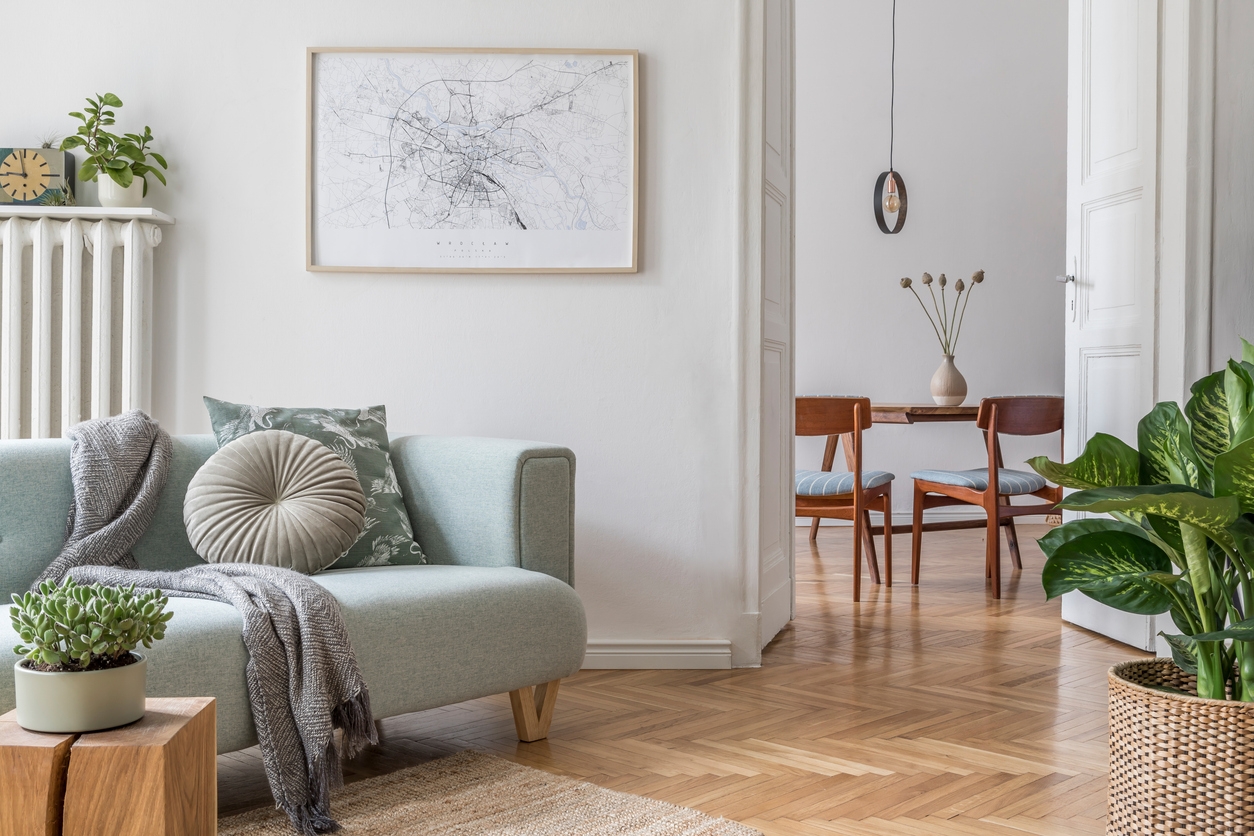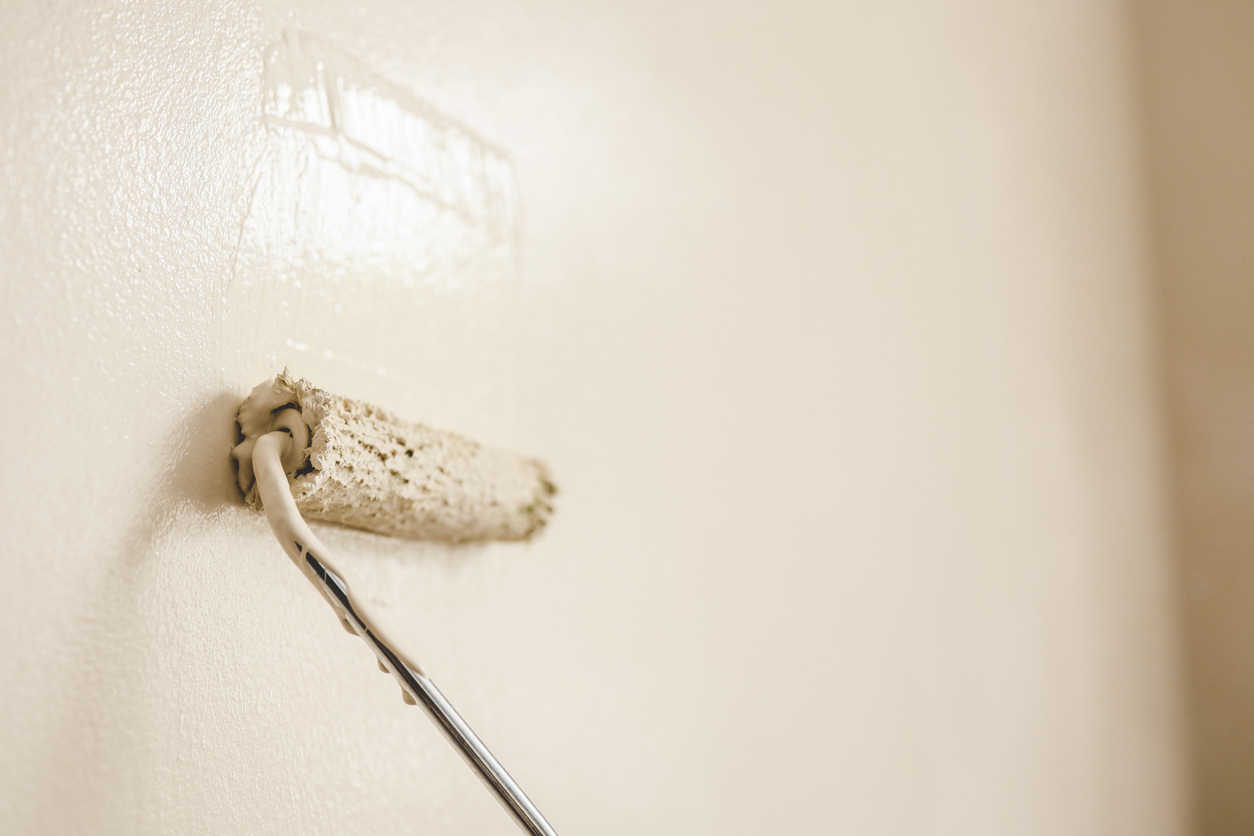Sanding between coats of interior paint is necessary to improve the paint finish’s smoothness and durability. However, you may skip this step under certain circumstances.
If you hired Danville, CA area professional painters before, you may have observed them assessing the need for sanding based on factors like the surface texture, the type of paint used, and the project’s goals.
For example, if the surface feels rough or there are imperfections, light sanding between coats can help achieve a flawless finish. However, on smooth surfaces or when using self-leveling paints, sanding might not be needed.
The purpose of sanding between coats of paint
Sanding between coats of paint is crucial for achieving a professional, long-lasting finish.
- Improving adhesion: Sanding creates a slightly rough texture, allowing the next coat of paint to bond better with the surface. This enhanced adhesion helps the paint stick evenly, reducing the chances of peeling or chipping over time.
- Smoothing imperfections: It helps eliminate minor surface flaws, such as bumps, brush marks, or dust particles, that may settle on the surface after the first coat. It ensures that subsequent layers go on smoothly.
- Achieving a flawless finish: Sanding between coats helps produce a more even and refined look, which is essential for high-gloss or semi-gloss paints, where smoothness and shine are critical. It leads to a flawless, polished result.
When sanding between coats is necessary
Sanding between coats of paint is essential in the following situations:
- Rough surfaces: When working on rough or previously damaged surfaces, sanding helps create a smooth foundation, ensuring the next coat adheres properly and results in an even finish.
- High-gloss and semi-gloss paints: Glossier finishes can have adhesion issues. Light sanding between coats provides texture, allowing the next layer to stick better and preventing peeling or flaking.
- Trimming and cabinets: For wood surfaces like trim, cabinets, and doors, sanding is crucial for achieving a smooth, durable finish, preventing visible brush strokes or imperfections. This is especially important when repainting kitchen cabinets.
- Repair and patch jobs: After patching or repairing drywall, sanding smooths out uneven areas, ensuring that the repaired sections blend seamlessly with the surrounding surface when the next coat is applied.
When sanding between coats is optional
On the other hand, sanding between coats of paint is often optional in the following cases:
- Flat or matte paint finishes: These finishes are more forgiving when it comes to imperfections. Sanding is typically not required unless there are visible flaws, as these finishes hide minor imperfections well.
- Same-day recoating: When applying a second coat within a short timeframe (following the manufacturer’s instructions), sanding may not be needed. The paint remains tacky, allowing the second coat to adhere without additional preparation.
- High-quality paints: Premium paints often provide excellent coverage and adhesion, which can reduce or eliminate the need for sanding between coats, especially if applied correctly.
How to sand between coats properly
To sand between coats properly:
1. Use the right grit sandpaper:
- Fine grit (220-320): Opt for fine-grit sandpaper to lightly scuff the surface without removing too much paint, ensuring a smooth finish.
- Sanding sponges: These are great for hard-to-reach areas like corners or trim, offering even pressure in tight spaces.
- Light, even pressure: Apply light, even pressure, to scuff the surface without sanding it down completely.
2. Clean the surface after sanding:
- Remove dust: After sanding, thoroughly clean the surface by wiping or vacuuming to eliminate dust, which could otherwise interfere with paint adhesion or cause a gritty finish.
- Use a tack cloth: Follow up with a tack or damp cloth to pick up any remaining fine dust particles before applying the next coat.
Potential downsides of skipping sanding
Skipping sanding between coats of paint can lead to several issues:
- Poor adhesion: Without sanding, the next coat may not bond well to the previous one, potentially resulting in peeling or chipping over time. Sanding helps create a slightly rough surface for the paint to grip.
- Visible imperfections: Dust, bumps, or brush marks from the previous coat become more noticeable if they’re not smoothed out. These imperfections can ruin the overall finish and make the paint job look unprofessional.
- Uneven finish: Skipping sanding can lead to an uneven or streaky appearance, particularly with gloss or semi-gloss paints, which highlight flaws. Sanding ensures a smooth, even surface, enhancing the paint’s final look.
Special cases when sanding is essential
Sanding between coats of paint is essential in certain situations to ensure proper adhesion and a smooth, professional finish:
- Painting over high-gloss surfaces: Sanding is crucial when painting over a high-gloss surface because the slick finish can prevent the new coat from adhering correctly. Lightly sanding the surface helps create a rougher texture for the new paint to bond to.
- Transitioning between paint types: When switching from one paint type to another, such as oil-based to water-based, sanding is often necessary. This step helps ensure compatibility by removing the smooth layer of oil-based paint, allowing the new water-based coat to adhere securely.
- Textured or rough surfaces: Sanding is crucial on surfaces with heavy textures or imperfections to smooth out bumps or uneven areas. This step ensures the new paint layer goes on evenly, achieving a polished, professional finish.
Why hire a professional painter for interior projects
Hiring a professional painter for interior projects offers several advantages, especially when achieving a flawless and long-lasting finish. Here’s a breakdown of why their expertise matters:
Expertise in surface preparation
Professional painters excel in assessing surfaces to determine the necessary preparation steps. When it comes to sanding between coats of paint, they have a keen eye for details like surface texture, existing imperfections, and the type of paint or finish being applied.
Alamo, CA area professionals can gauge whether sanding is necessary to smooth out the surface, ensuring that each coat adheres properly and eliminates flaws like brush marks or dust nibs. Their assessment prevents over-sanding, which could damage surfaces, and ensures that every coat contributes to a professional, even finish.
Proper tools and techniques
Professional painters in Pleasanton, CA have the right tools, from high-quality sandpaper and sanding blocks to electric sanders for large areas. They know which grit to use for each stage, whether finer sandpaper for light touch-ups or coarser grit for more extensive smoothing.
With their experience, professionals can sand effectively without damaging the surface or creating uneven patches. This expertise helps avoid unnecessary extra work while ensuring the surface is optimally prepared for the next coat of paint. Their precision guarantees that each layer builds upon the last for a smooth and durable result.
Time and labor efficiency
Sanding between coats of paint isn’t always required, but it can significantly improve a paint finish’s adhesion, smoothness, and overall quality.
Managing surface prep efficiently enables professionals to minimize delays and avoid common DIY mistakes like over-sanding or missing crucial areas. Homeowners save time and effort while benefiting from a high-quality finish that only experienced painters can deliver. Additionally, their skill in managing the entire painting process ensures that the project is completed faster and with better results than a DIY attempt.
Hiring a professional ensures that your interior painting project is done efficiently, with expert knowledge applied at every step, from surface prep to the final coat.
Conclusion
Sanding between coats of paint isn’t always required, but it can significantly improve adhesion, smoothness, and the overall quality of the finish.
Assessing your specific project needs or consulting with a professional painting company, such as Custom Painting, Inc., is crucial to determining if sanding is necessary for your project. For expert advice and services to achieve a smooth, professional finish on your next interior painting project, contact Custom Painting, Inc. today at 925-866-9610 or use our contact page!




